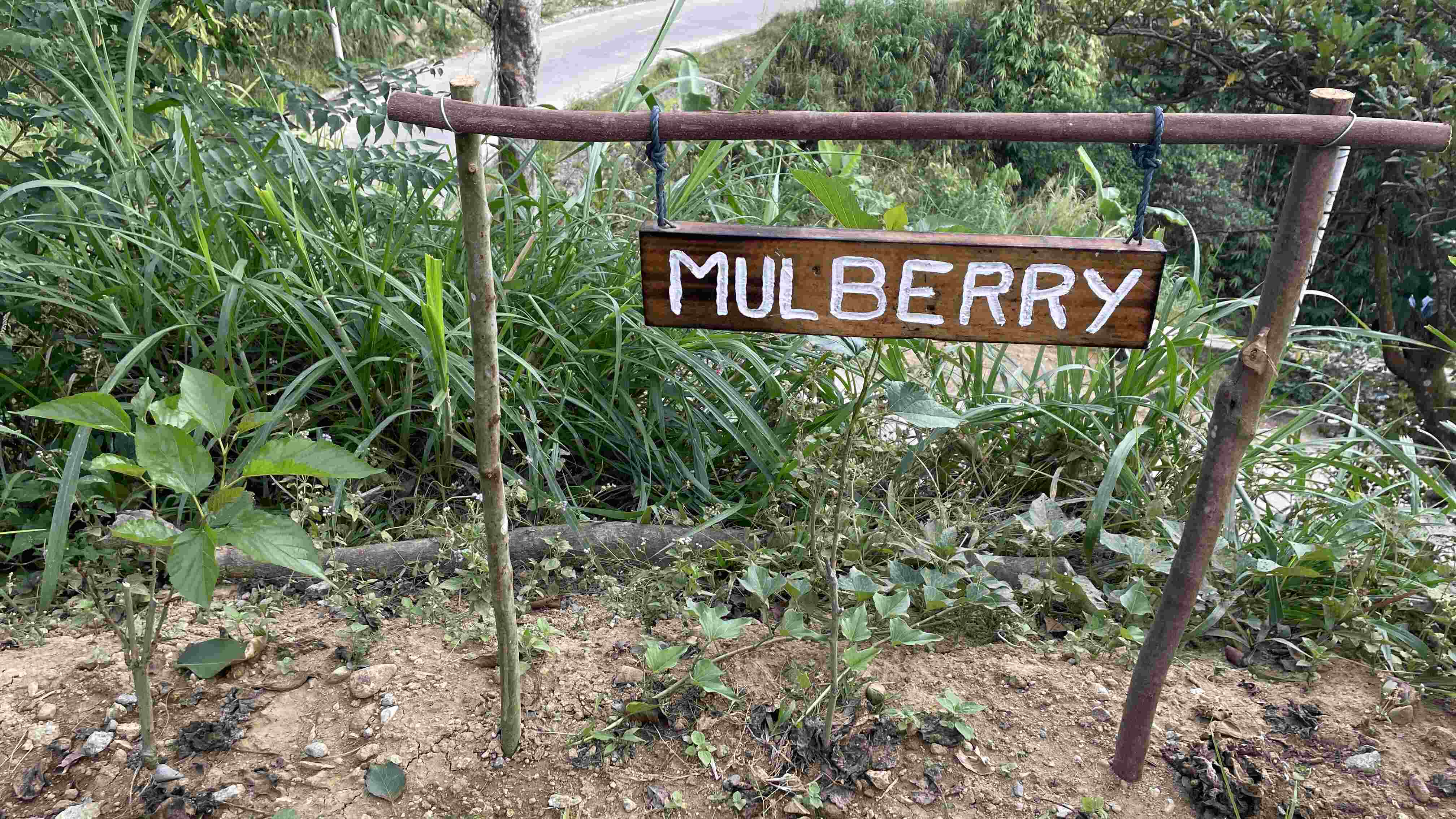Weekend Condo Project: Beginner Ikebana for the Minimalist Condo Resident
Zen, which comes from the school of Mahayana Buddhism, is the core of Japanese design and lifestyle. This ancient teaching encourages meditation and perception of the inner self. “Zen is not some kind of excitement, but concentration on our usual everyday routine,” says Sōtō Zen monk Shunryu Suzuki.
To accommodate a contemplative lifestyle, a traditional Japanese home features modest designs and uncluttered décor elements. You can incorporate this simplistic elegance in condo living by adding Japanese design elements in your condo space. How? Explore the art of ikebana.
Ikebana, an ancient Japanese art form
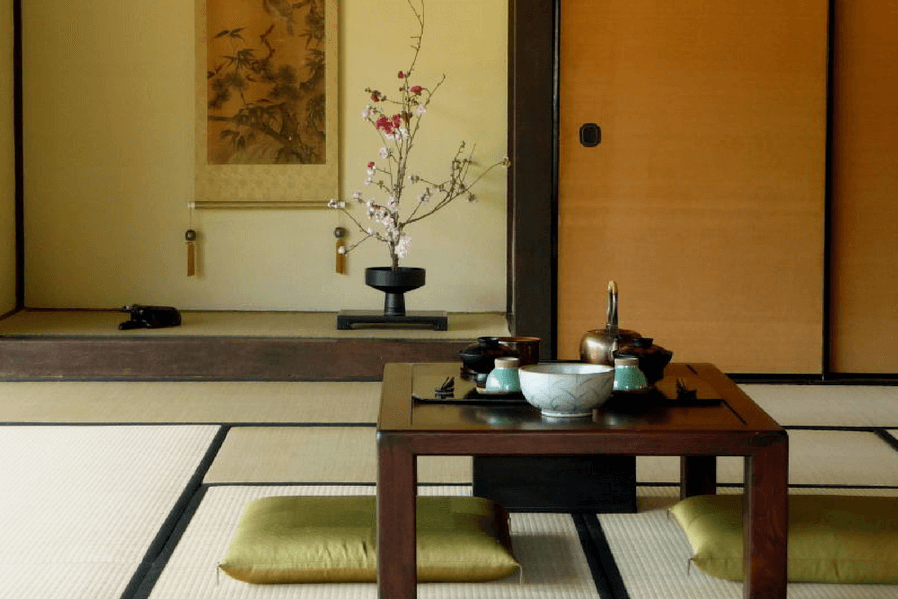 Photo courtesy of Animus3 Photography via Pinterest
Photo courtesy of Animus3 Photography via Pinterest
Ikebana is the Japanese art of flower arranging that has been practiced since the 6th century. According to Ikebana International, an organization founded in the 1950s, this art was introduced through Buddhism in which worshippers offer flowers to honor Buddha. The word “ikebana” came from the Japanese term “ikenobo” which means “side of a lake” where the first ikebana expert lived. You can infuse this treasured art in condo living in the Philippines in various creative ways.
The ikebana schools
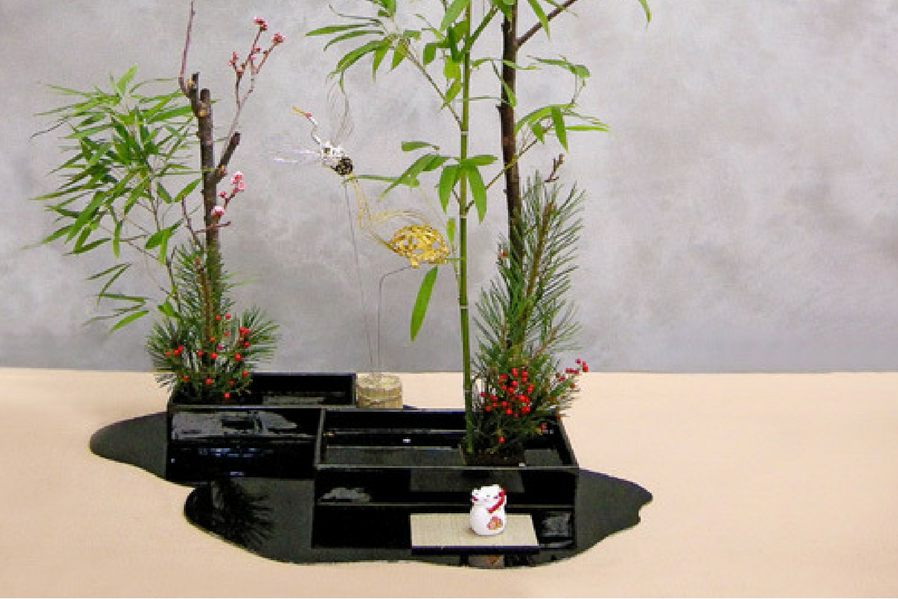 Photo courtesy of ikebanabeta.nwcic.com via Pinterest
Photo courtesy of ikebanabeta.nwcic.com via Pinterest
From the altars of Buddha, the presence of ikebana in Japanese life extended to traditional festivals, royal courts and living spaces. Several schools of ikebana emerged over the years, setting their own rules on materials and arrangement. How to do the ikebana? It varies on the ikebana school you choose.
The Chiko School combines elements of traditional Japanese design with modern aspects. It “creates an elegant beauty with a modern sense,” as Ikebana International puts it. Chiko School's arrangements may include non-floral materials such as seasonal fruits and vegetables or folk décor. The other ikebana schools, whose influences have crossed borders, are Ichiyo, Ikenobo, Misho, Ohara, Ryuseiha, Saga Goryu, Shinpa Seizan and Sogetsu.
The flowers of ikebana
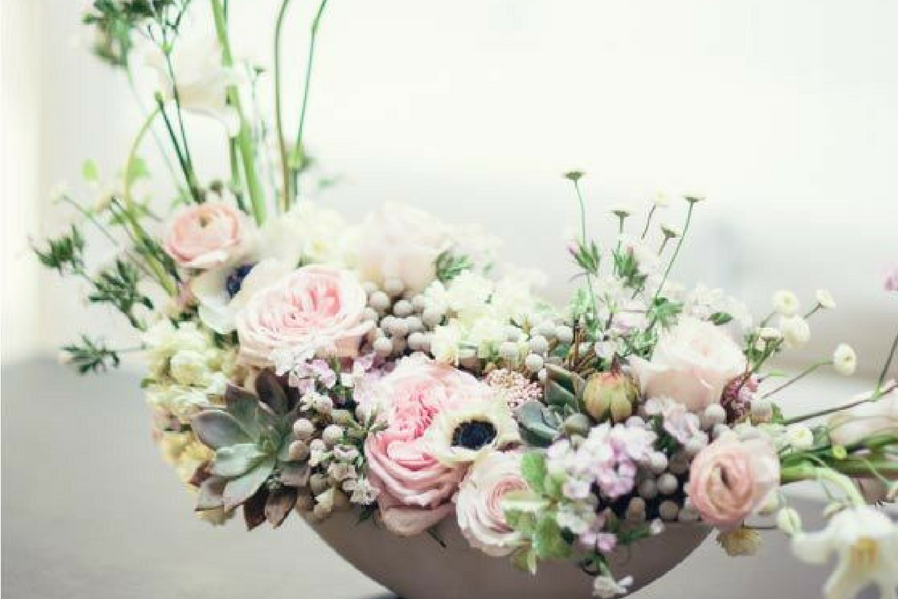 Photo courtesy of Utterly Engaged via Pinterest
Photo courtesy of Utterly Engaged via Pinterest
For a minimalist condo resident, knowing the basics of ikebana means getting familiar with the ikebana flowers. The main types of floral elements are shin, soe and tai. The most common shin flowers are peach blossom, flowering plum and flowering dogwood. You can also use calla lily, Iris and Nardina branches. Soe flowers include thistle, dahlia and peony while tai include misty blue, baby's breath and great burnet.
A freestyle ikebana for your condo space
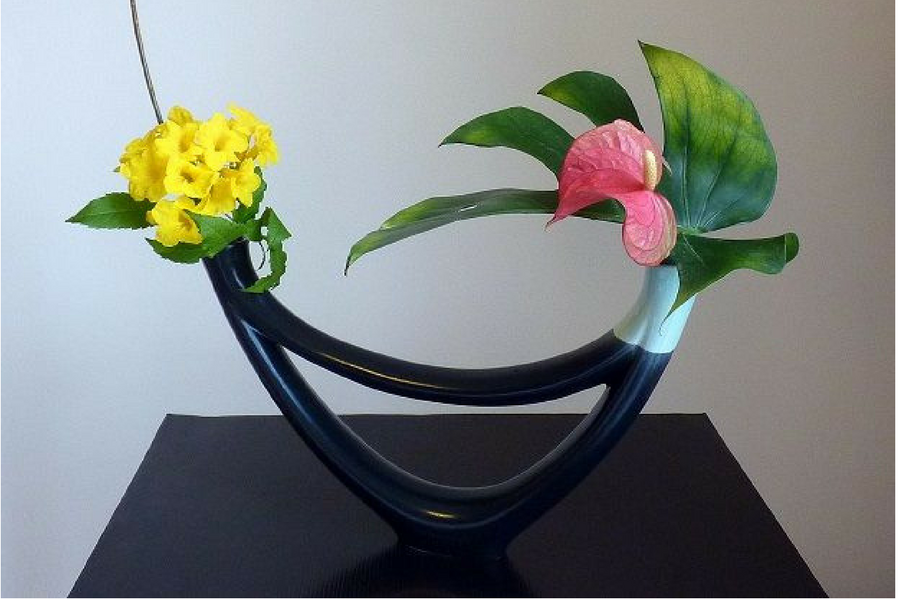 Photo courtesy of flickr.com via Pinterest
Photo courtesy of flickr.com via Pinterest
Living in a condo is aligned with the Zen principles of simplicity and tranquility. The smaller spaces in condo homes allow the tenant to simplify their lifestyle by keeping only items that offer real value. A tight home discourages hoarding behaviors and encourages a clutter-free space. Moreover, DMCI condos feature amenities that promote meditative activities and relaxation such as a gazebo, landscaped gardens, and roof decks.
With the right condo interior design, you can seamlessly incorporate the simplistic elegance of Zen-inspired design into your home. The Ryuseiha School's freestyle flower arrangement allows the arranger to express their feelings and personality. “You capture the essence of the plants you work with according to your own sensibility and arrange them in any way you like,” according to Ikebana International. Display a Ryuseiha ikebana in your living room and bedroom for a touch of calm in your home.
Miniature natural environments
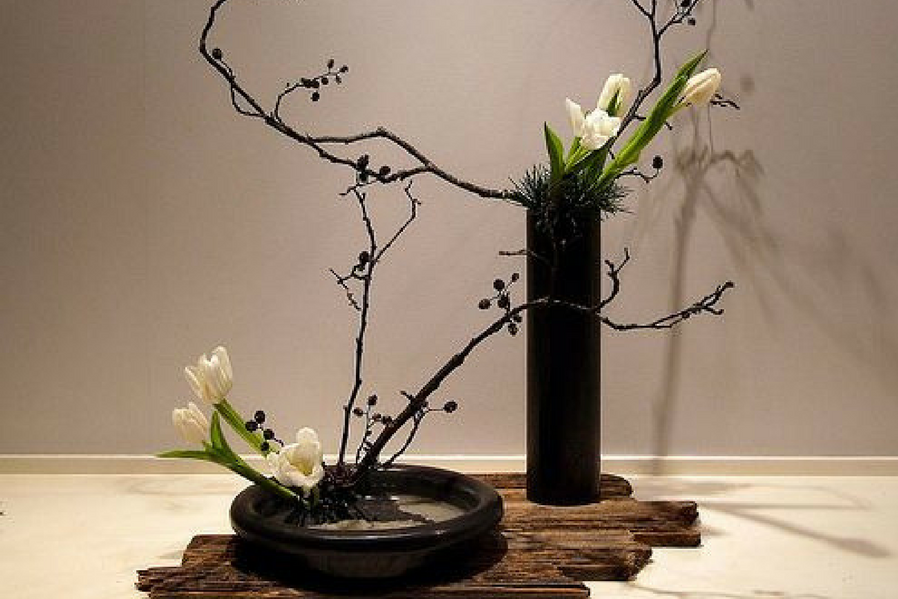 Photo courtesy of nordic-lotus.blogspot.com via Pinterest
Photo courtesy of nordic-lotus.blogspot.com via Pinterest
One of the benefits of ikebana is the ease of blending it in modern environments. Green spaces are emerging trends in urban planning and interior design because their impact on humans' physical and mental health. Living near gardens and parks encourages an active lifestyle and relieves the mind of anxiety and stress. You can have a patch of nature in your condo home with ikebana.
The Ohara School's Moribana style adopts a landscape arrangement in which the floral and line materials are spread in a wide shallow container. Many arrangers place small pebbles at the bottom of the container for a more organic look. This style, which emanates Western influences, has presence in many hotels, offices and other spaces in the West. Moribana has various types such as the upright arrangement in which a longer primary stem is placed vertically in a vase while shorter secondary stems are tilted 45 degrees and placed over a 30-degree area.
Ikebana for everyone
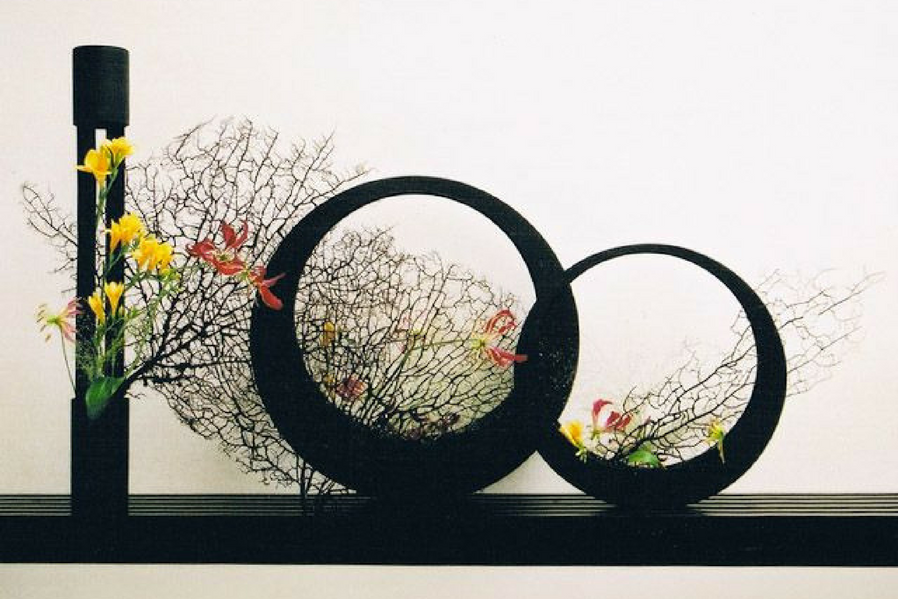 Photo courtesy of tonsen.jp via Pinterest
Photo courtesy of tonsen.jp via Pinterest
The Sogetsu School has a revolutionary approach to the traditional art of flower arrangement. It can be created “anytime, anywhere, by anyone” using any available material. The Sogetsu School is guided by the philosophy that ikebana should be part of a lifestyle to be appreciated by people from all over the world instead of being exclusive to the Japanese. This arrangement is essentially freestyle, allowing the arranger to make their original expression freely. The Sogetsu ikebana is present in display windows, lobbies and homes across the globe.
“Ikebana is not just about sticking a flower into a vase: it is about the love and need of the artist to create beautiful forms...ikebana is not just about flowers, it is about the person who arranges them,” says Sofu Teshigahara, founder of Sogetsu School.
Emotion and character in a vase
The Ichiyo School arrangement is gaining popularity in modern homes across the globe. This school is guided by two philosophies: that the arrangement must suit the environment in which it is displayed and that it must express the arranger's emotions and personality. The Ichiyo arrangement balances contemporary elements with traditional asymmetrical forms and creates three-dimensional designs.
A balance between tradition and modernity
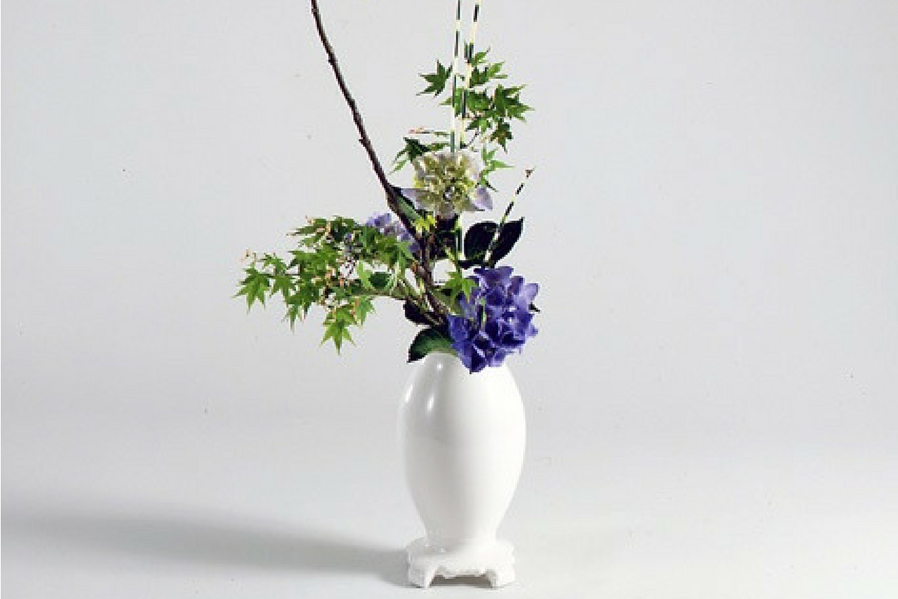 Photo courtesy of ohararyu.or.jp via Pinterest
Photo courtesy of ohararyu.or.jp via Pinterest
Balance is at the core of the Misho School. This arrangement has two styles: the classical Kakubana and contemporary Shinka. The Kakubana style is specific with the geometrical figure of the floral materials. A flower arrangement must reflect the harmony between nature and human beings by arranging three branches within a triangle diagram. Each branch signifies heaven, man and earth. The Shinka, a contemporary style, allows the arranger to express their emotions through by the physical quality of the flowers, décor and vases.
Maximize the benefits of condo living by transforming your home into a relaxation space. Consider a minimalist interior design which is free from clutter and visual chaos. Integrate the Japanese values of simplicity, tranquility and elegance. Then, add a splash of life in your living space with ikebana.


